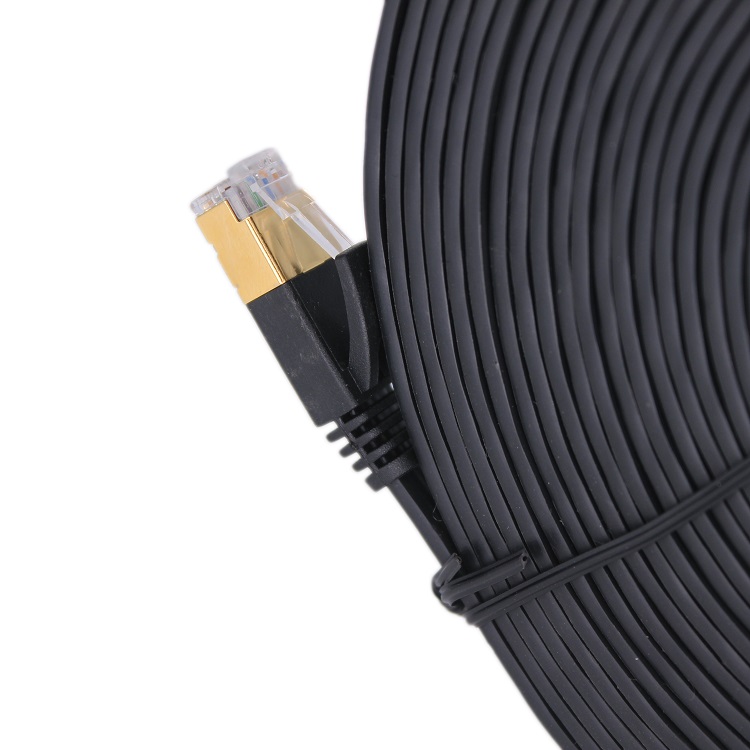In the realm of networking, the choice between different types of cables can significantly impact the speed, reliability, and overall performance of data transmission. Category 7 (Cat7) cables and fiber optic cables are two prominent contenders in this landscape, each offering unique advantages and catering to different networking needs. This article delves into the comparison between Cat7 cable and fiber optic cable, shedding light on their characteristics, benefits, and the scenarios where each excels.

1. Transmission Medium
At its core, one of the most significant distinctions between Cat7 cable and fiber optic cable lies in their transmission mediums. Cat7 cables are copper-based, utilizing twisted pairs of copper wires to transmit electrical signals. On the other hand, fiber optic cables employ thin strands of glass or plastic to transmit data using light signals. This distinction sets the foundation for the differing characteristics and capabilities of the two types of cables.
2. Speed and Bandwidth
In terms of speed and bandwidth, fiber optic cables hold a distinct advantage. Fiber optic cables can support significantly higher data transfer rates compared to ethernet cable cat 7. Fiber optic cables can achieve speeds of up to 10 Gbps, 40 Gbps, or even 100 Gbps, depending on the technology used. This makes them ideal for data-intensive applications and scenarios where ultra-high-speed connectivity is paramount. While Cat7 cables offer respectable speeds of up to 10 Gbps, fiber optic cables outshine them in this aspect.
3. Distance
Fiber optic cables also excel in terms of transmission distance. They can transmit data over much greater distances without signal degradation compared to copper-based cat 7 ethernet cable. Fiber optic cables can cover distances of several kilometers without significant loss of signal quality, making them the preferred choice for long-range communications, such as interconnecting data centers or linking remote locations.
4. Immunity to Electromagnetic Interference
Fiber optic cables have a distinct advantage in environments prone to electromagnetic interference (EMI). As fiber optic cables transmit data using light signals, they are immune to EMI and radio frequency interference (RFI). This immunity ensures stable and consistent data transmission even in environments saturated with electronic devices. In contrast, Cat7 cables, while equipped with shielding mechanisms, can still be susceptible to EMI in certain scenarios.
5. Size and Weight
Fiber optic cables have a significant advantage in terms of size and weight. Fiber optic cables are smaller and lighter than copper-based Cat7 cables, making them more versatile and easier to install in tight spaces. Their compact size also contributes to reduced clutter and improved cable management.
6. Cost and Installation
Cat7 cables tend to be more cost-effective compared to fiber optic cables, both in terms of cable material and installation. Fiber optic cables and the associated networking equipment can be more expensive to purchase and install. Cat7 cables, being copper-based, have a wider familiarity among installers, which can contribute to lower installation costs.
7. Reliability and Durability
Both Cat7 cables and fiber optic cables are designed for reliability, but fiber optic cables often exhibit higher durability due to their immunity to factors like EMI, lightning, and environmental conditions. Fiber optic cables are also less susceptible to signal degradation over long distances, ensuring consistent data transfer.
The choice between Cat7 cable and fiber optic cable hinges on the specific networking requirements and goals. While Cat7 cables offer respectable speeds, lower costs, and familiarity in installation, fiber optic cables shine in terms of speed, long-distance transmission, immunity to interference, and durability. Fiber optic cables are particularly well-suited for high-speed data centers, interconnecting remote locations, and scenarios demanding future scalability. Ultimately, the decision between Cat7 and fiber optic cables rests on factors such as budget, the need for high speeds, the distances to be covered, and the tolerance for electromagnetic interference. By understanding the strengths and weaknesses of each type of cable, individuals and organizations can make an informed choice that aligns with their networking aspirations.


